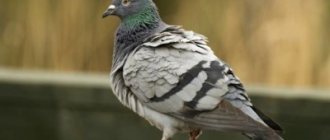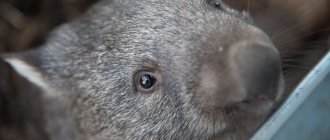Review author: “ZooVita”
The hedgehog is not a rare animal. It can be seen in wildlife more often than other forest inhabitants. Moreover, it is possible to meet hedgehogs not only in the forest, but also in summer cottages, and occasionally in the city. This is confirmed by numerous photographs of the hedgehog available on the Internet.
Everyone has known the hedgehog from childhood through books and cartoons. There he is often depicted with apples or mushrooms on needles. Because of this, an incorrect opinion is formed about the diet of this animal and its lifestyle.
In fact, the hedgehog family belongs to the order of insectivorous animals. The name itself, according to one version, refers to the ancient Greek “echinos”, which translates as “snake eater”.
Animals are not afraid of snake venom, so they destroy small snakes, rodents, as well as various insects, which brings great benefits to nature.
Appearance of a hedgehog
This is a small animal, most of whose body is covered with spines. The body length of an adult varies from 10 to 45 cm depending on the species, and the weight can range from 300 to 1500 grams.
The animal has short legs with claws on the toes, a fairly large wedge-shaped head, black eyes and a nose that is very mobile. The hedgehog's hind legs are longer than its front legs and have five toes.
Adults have small but sharp teeth. At the same time, the front pair are noticeably larger than the others; in appearance they resemble fangs. Depending on the type of animal, the number of teeth can reach 44. On average, a hedgehog has 36 teeth (of which 20 are on the upper jaw and 16 on the lower jaw).
Scientists note the incredible cleanliness of these small forest inhabitants. They spend a lot of time on hygiene, and cleaning needles takes a particularly long time. The reason for this is that when moving along the forest floor, a lot of insects accumulate in the spaces between the needles.
An adult has at least 10 thousand spines on its body, each of them equipped with a separate muscular sac. This allows the hedgehog to raise its spines in case of danger.
Body color varies from light to dark brown, with sandy and white individuals found. The color is not monochromatic, it is camouflage in nature, which is easy to see from the photo of the hedgehog.
Hedgehogs move quite quickly on the ground, are able to climb a tree and swim. Being nocturnal animals, they are distinguished by poor vision, acute hearing and sense of smell.
Interesting Facts
- It is noteworthy that eared hedgehogs are good stewards of agricultural land, since they feed on a variety of parasitic insects and rodents. Especially if they live near human settlements.
- The species of eared hedgehogs is listed in the Red Book of Ukraine and Russia in the lists of animals in need of protection. Many species of these hedgehogs are artificially bred in many nature reserves. An important reason for the decline in their numbers is the destruction of their natural habitat – dry steppes.
- It is believed that these animals inhabited our planet several million years ago, and their appearance has remained pristine to this day.
- Thanks to its fast running, predators may not catch up with this small, agile hedgehog.
- During the breeding season, males are able to make sounds similar to singing.
- Eared hedgehogs are very resistant to severe temperature changes.
Hedgehog habitats
The easiest way to answer the question is where does the hedgehog live. Their permanent habitat includes the territory of Europe, Asia, Africa, Australia and New Zealand.
Hedgehogs are easy to find in forests, steppe areas and even deserts. Animals are not afraid of being close to people; they are often found in summer cottages, in public gardens and city parks.
Distribution of the common hedgehog
The common hedgehog lives in Western and Central Europe, Great Britain, southern Scandinavia, northwestern Russia, Western Siberia and Kazakhstan.
The species was introduced to New Zealand. The animal is found in a wide variety of habitats, avoiding only swamps and solid coniferous areas. The hedgehog loves to live on the edges, in copses, in small clearings, in floodplains, often next to people. Nowadays the hedgehog can easily be found in urban areas, where it has no natural enemies.
Hedgehog lifestyle
Hedgehogs are predominantly nocturnal. They usually make burrows in bushes and tree roots. There are known cases when animals occupied ready-made burrows of other forest inhabitants.
The hedgehog leads a solitary lifestyle and does not stray far from its burrow. Males protect their territory from invasion by other males. Animals meet with representatives of the opposite sex only for the purpose of reproduction.
As a rule, animals sleep in their burrows during the day and go hunting at night. At the same time, it is not uncommon to see hedgehogs in nature during daylight hours.
Mystical views
The Bulgarians considered the hedgehog to be the wisest animal, since it is long-lived, has a good memory and knows a lot about rejuvenating herbs, so it always remains young. Residents of Polesie also consider this animal a good herbalist.
If you believe their legends, in addition to the grass of “youth”, he knows where the “impatiens” grows - a plant that opens any locks. To find it, a person needs to find a hedgehog's hole and block the entrance with stones. An animal that cannot get inside will go in search of the miracle herb to overcome the obstacle that has arisen.
“Creativity and Creativity”: Rosobrnadzor is thinking about transforming the Unified State Exam
We make a comfortable duvet cover with our own hands: you will need two sheets
Vacationing in Russia has become even more profitable: how a tourist can get cashback
What does a hedgehog eat?
Answering the question of what hedgehogs eat, scientists classify them as omnivores. The little hedgehog is a nocturnal hunter, actively eating any insects, small rodents, lizards, toads, frogs and even small snakes.
Lack of sensitivity to the venom of insects and snakes allows hedgehogs to successfully hunt dangerous prey. However, hedgehogs can also eat mushrooms, berries, acorns, vegetables and fruits.
Like bears, hedgehogs strive to accumulate a certain fat reserve in the fall so as not to die from lack of food and cold weather during hibernation.
Feeding features of the common hedgehog
— Advertising —
The common hedgehog is an omnivore. It feeds on adult insects, including harmful ones (chafer beetle, hairy ground beetle, nun caterpillar, gypsy moth), caterpillars, slugs, earthworms, and mice. He also eats fruits and berries. It can feast on the eggs and chicks of small birds whose nests are located on the ground.
In captivity, hedgehogs eat vipers without harm to themselves. In wild conditions this is also possible. Poisons (arsenic, sublimate, opium, hydrocyanic acid) have a weak effect on the hedgehog. Their dose, lethal to a person or other animal, does not kill a hedgehog.
Hedgehog's enemies in the wild
Despite the ability to curl up into a spiny ball for protection, the hedgehog often becomes prey to larger forest predators. Hedgehogs are hunted by foxes, wolves, badgers, hyenas, jackals, large owls, mongooses, badgers, and ferrets.
In recent years, a large number of animals have died under the wheels of cars when trying to cross the road at night.
Where does the hedgehog live and how?
The common hedgehog lives in Western and Central Europe, the British Isles, southern Scandinavia, northwestern European Russia, Western Siberia and Kazakhstan. The common hedgehog also lives in New Zealand, where it was introduced. This insectivorous animal is most widespread in Europe, Western Siberia, northwestern Kazakhstan, Asia Minor, Amur region, northern and northeastern China.
The hedgehog lives in different places, but avoids large swamps and dense coniferous forests. The hedgehog lives preferring forest edges, copses and small clearings. In Europe, the common hedgehog can be found in mixed forests, shrubs and grassy plains. Also, a hedgehog often lives next to a person. Therefore, finding a hedgehog in a city park or in a country house is a common occurrence.
Hedgehogs live by being active at night. During the day, hedgehogs live in their nests, where they can rest comfortably. Hedgehogs make their nests in bushes, holes, tree roots or empty rodent burrows.
Typically, a European hedgehog's nest is 15-20 cm in diameter and has a flooring of dry grass, leaves and moss. In such a nest the hedgehog sleeps and can take care of itself. With the help of their paws, hedgehogs take care of their prickly fur coat, and they lick their chest and belly with their tongue.
Also, hedgehogs each live in their own area, where they wander in search of food. During the night, the common hedgehog runs up to 3 km. Males show aggression among themselves and protect their territory. They snort noisily and make various sounds similar to sneezing.
The area of the site for males is 7-39 hectares, and for smaller females it is 6-10 hectares. Even though hedgehogs have a prickly coat, they also shed. In ordinary hedgehogs this usually occurs in spring or autumn. This process is very long and slow. Each new needle grows for 12-18 months.
The small size of the common hedgehog does not prevent it from being quite nimble. These animals can run at speeds of up to 3 m/s, and they are also excellent swimmers and jumpers. Hedgehogs have poor eyesight, but they have a very keen sense of smell and sensitive hearing.
In the summer, the hedgehog prepares for winter and accumulates fat reserves for the winter. In addition to his usual weight, he also gains 500 g of fat, because in winter the hedgehog hibernates. Hedgehogs spend the winter in their burrows. When frosts come, European hedgehogs hibernate, tightly closing the entrance to their burrow. Hibernation usually lasts from October to April.
During hibernation, a hedgehog's body temperature drops to 2 °C. Over the summer, the hedgehog must gain as much fat as possible, because if it hibernates without the necessary supply of fat, it may die of starvation in the winter.
After hibernation, this insectivorous animal does not immediately leave the nest, but waits until the air temperature rises to 15 °C. Common hedgehogs live alone, but settle close to each other. Adults avoid close contact with each other, with the exception of mating season. How many years do hedgehogs live? In nature, hedgehogs live 3-5 years, but the life expectancy of a hedgehog in captivity can reach 8-10 years.
Why do I eat needles? Everyone is familiar with the ability of hedgehogs to curl up into a prickly ball if danger threatens. This animal can remain in this state for a long time until the threat passes. The hedgehog's spines form a strong armor. Therefore, the hedgehog needs needles for protection.
But hedgehog spines require careful care, because the spines collect ticks and other parasites. The paws help the hedgehog clean its thorns. But since they are short, the hedgehog cannot reach everywhere to clean properly.
In such cases, the acid released by the fruit helps get rid of parasites. That's why hedgehogs ride on rotting apples or other fruits. This behavior makes one mistaken in thinking of the hedgehog as a passionate lover of apples, who pricks them on needles and carries them on his back to his hole. But this is not so, the hedgehog prefers insects.
The hedgehog is a peace-loving creature, but it has plenty of enemies in nature. Wolves, foxes, eagle owls and other predators threaten the life of the hedgehog. Having met a predator, the hedgehog first jumps on it to prick it, and then curls up into a ball. Having pricked its paws and muzzle, the predator loses interest and retreats.
But the enemies are cunning and are able to deceive the simple-minded hedgehog. Especially those that feed on hedgehogs. The eagle owl attacks unexpectedly and silently, trying to take the hedgehog by surprise. The bird's paws are protected by thick skin from the hedgehog's prickly needles. The fox drives the hedgehog to the water or throws it from a hill. In such situations, the hedgehog opens its abdomen and muzzle, becoming vulnerable to predators.
But in a duel between a European hedgehog and a snake, the prickly and fearless daredevil becomes the winner. The animal grabs the snake and curls up into a ball, gradually wrapping it around itself. After all, he is insensitive to many poisons.
Types of hedgehogs
Animals are divided into two subfamilies. The first unites real hedgehogs, and the second includes rats, called gymnurs. The most famous and interesting include several main species.
European hedgehog
The most common hedgehog is the common (European) one; it lives not only in Europe, but also in Asia. The body length of adult representatives of the species reaches 25-30 cm, weight reaches 700-800 grams. This is what can be found in the forests of the middle zone.
Hedgehog
It lives in Asian countries, as well as on the African continent. A clear sign of the species are the animal’s long (up to 5 cm) ears. Adults are also distinguished by their small body size. Their weight does not exceed 450 grams, and their body length reaches 27 cm.
Eastern European hedgehog
It differs from its European relative in having a lighter color in the belly and neck area. The habitat covers not only the lands of Eastern Europe. Representatives of the species can be seen in the Urals and the Middle East. Grows up to 1200 grams and 35 cm in length.
African pygmy hedgehog
It has an unusual appearance and behavior. In dangerous situations, it snorts loudly and screams. The tips of the needles are white. Adult animals are small in size, their body length does not exceed 20-22 cm with a body weight of up to 700 grams.
The habitat is limited to the southern tip of the Sahara. Animals of this species have also been spotted in Mauritania, Senegal, Sudan, Ethiopia, and Nigeria.
Daurian hedgehog
It belongs to the steppe fauna, therefore it has a protective brown coat color and sand-colored spines. It lives in the steppes of Buryatia, Mongolia, Transbaikalia, as well as in the northern part of China.
Reproduction of hedgehogs
Under natural conditions, the life expectancy of hedgehogs is from 3 to 5 years. Individuals reach sexual maturity by the end of the first year of life. The mating season occurs after the end of hibernation. Fights occur between males for possession of the female.
The gestation period for hedgehogs lasts from 34 to 58 days. Hedgehogs are born weighing 10-12 grams, without needles. They are blind, just like kittens. Quills appear within 24 hours after birth and are fully formed within 14 days.
Hedgehogs are characterized by active development, especially in the first month of life. They quickly leave their mother, switching to independent feeding.
The hedgehog is not only an entertaining, but also a very useful animal in nature.
Hygiene
Aside from being sensitive to temperature, hedgehogs are relatively easy to keep.
You should bathe your hedgehog once a month with baby shampoo, a toothbrush and warm water. It is important to be careful when cleaning your hedgehog's belly as this is your hedgehog's exposed skin and is his most sensitive area. In addition, your hedgehog should have its nails trimmed frequently. If the claws are too large, he may get hurt. There have been several reported cases of hedgehogs scratching their eyes and causing significant injury to themselves. When trimming a hedgehog's nails, keep in mind that they are very similar to a dog's nails in that they contain some skin. Therefore, this should be done carefully and best after bathing, as the claws will be softer. Nails can be trimmed with cuticle scissors or baby scissors.
Hedgehog after bathing
Cages should be cleaned every two weeks and bedding changed as often. The wheel needs to be cleaned every day as most hedgehogs tend to do what they need to do on the wheel.











